Recent Articles
Popular Makes
Body Types
10 Most Reliable Used SUVs Under $10,000
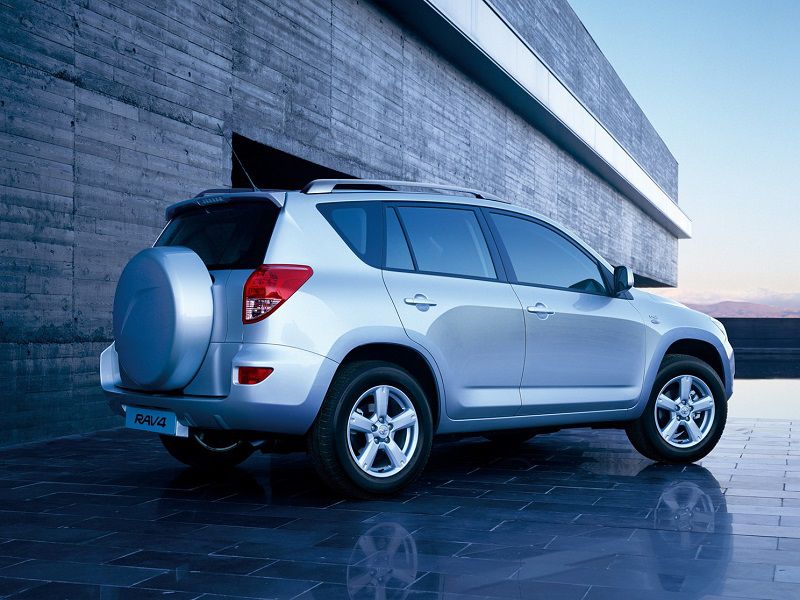
2006 Toyota RAV4 Silver Rear Three Quarter ・ Photo by Toyota
Finding a reliable SUV priced under $10,000 is a daunting task, but it’s not impossible. Making matters more difficult, the ones good for towing lots of weight and hauling lots of people typically have very high miles on them if they’re priced beneath the 10-grand cap. And any vehicle, regardless of make and model, is going to require regular maintenance and repair once the odometer shows six digits.
While researching this list of the 10 most reliable SUVs under $10,000, we set several parameters. First, the make/model needed to have a track record for reliability. Second, multiple examples with fewer than 100,000 miles needed to be found within a few hundred miles using used car listing services. Third, it needed to be available on used car lots run by major dealership chains and not just mom-and-pop shops. Fourth, it couldn’t be more than 15 years old. On the pages that follow, and within these parameters, you’ll find the 10 most reliable SUVs under $10,000 based on research carried out in April 2020.
2010-2015 Honda Accord Crosstour
Based on the Honda Accord, the Honda Accord Crosstour should have been a legit Subaru Outback competitor. But instead of using a traditional station wagon body style, the Accord Crosstour arrived with a big, fat, football-shaped rear end. A decade later, SUV “coupes” are increasingly popular but back in 2010, this design approach was nothing but strange. As a result, used suv shoppers can benefit from this rare stumble by Honda.
Originally, Accord Crosstours came in EX and EX-L trim levels, all powered by an excellent 271-horsepower 3.5-liter V6 engine. A five-speed automatic drives the front wheels, and all-wheel drive was an option with EX-L trim. In 2012, Honda dropped the Accord name and added an optional four-cylinder engine. This mid-size crossover suv offers plenty of safety, but the fastback roofline chews into cargo space. Behind the back seat, it offers 25.7 cubic feet. Fold the rear seats and you get no more than 51.3 cubic feet.
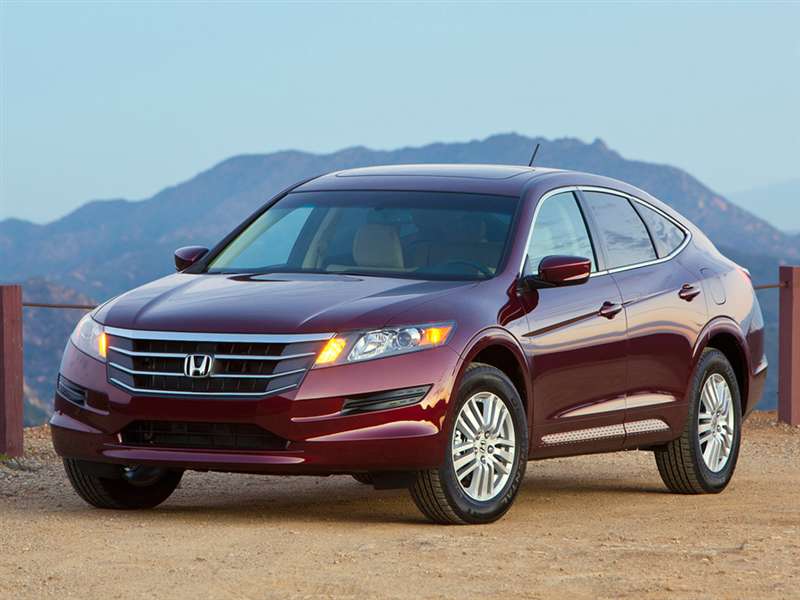
Photo by Honda
2006 Honda CR-V
The 2006 Honda CR-V was the last of the second-generation models, a boxy and utilitarian but exceptionally reliable and useful crossover suv. Finding one this old, with less than 100,000 miles on it, is getting harder every day. But when you do, as long as the vehicle identification number (VIN) history check is clear, this CR-V is an excellent bet.
For its final year before a complete redesign, the 2006 CR-V came in LX, EX, and SE trim levels. A 156-horsepower, 2.4-liter four-cylinder engine powered the front or all four wheels, and the CR-V came standard with stability control and six airbags. Cargo space is generous, measuring 33.5 cubic feet behind the rear seat and 72 cubic feet with the back seats folded.
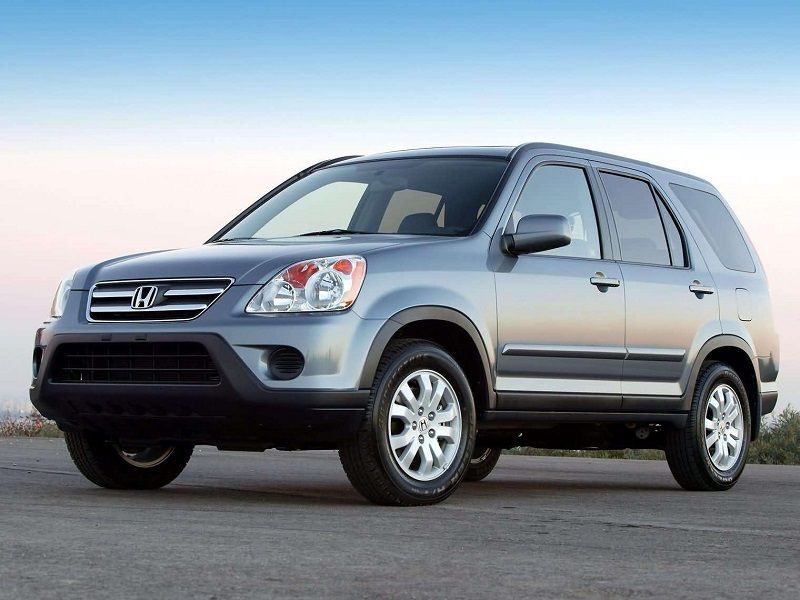
Photo by Honda
2007-2011 Honda CR-V
Honda redesigned the CR-V for 2007, and while the styling isn’t to everyone’s tastes, the third-generation version of the automaker’s popular compact crossover suv undoubtedly has bulletproof reliability. However, that reputation keeps prices high, so examples that sell for less than $10,000 are typically low on equipment, high on miles, and on the older end of this model-year range.
Trim levels include LX, EX, and EX-L, the latter featuring leather seats. A 166-horsepower, 2.4-liter four-cylinder engine is the sole powerplant, driving the front wheels through a five-speed automatic transmission. All-wheel drive was an option, and the third-generation CR-V offered plenty of safety for the era. Cargo space is generous for a compact crossover SUV, measuring 35.7 cubic feet behind the back seat and 72.9 cubic feet with the rear seats folded down.
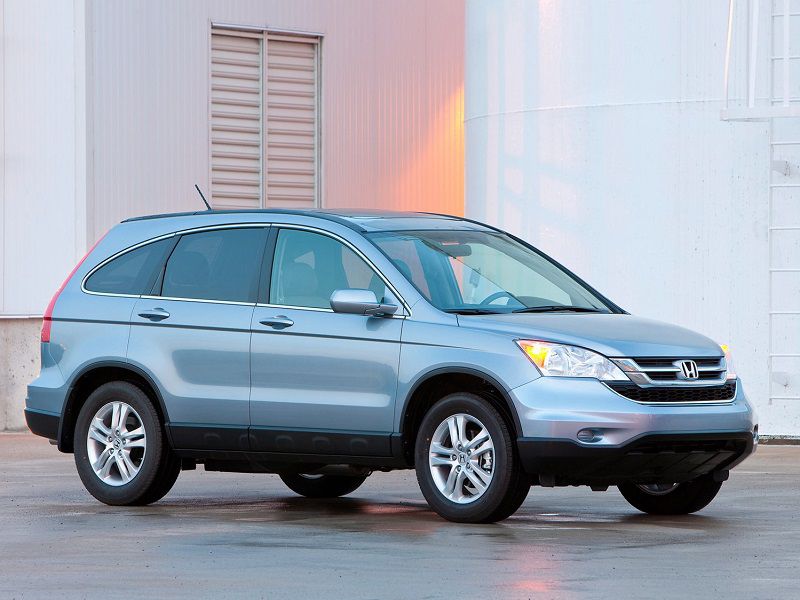
Photo by Honda
2006-2011 Honda Element
Weird doesn’t even begin to describe the Honda Element, but unlike the Accord Crosstour, this goggle-eyed, plastic-paneled box on wheels somehow endeared itself to consumers.
Personality goes a long way toward making the Element appealing today, but so does its unfailing reliability and exceptional utility. However, since Honda didn’t replace the Element after its original-recipe run, the people who own them tend to hang onto them, so finding one can be a challenge. Over its long life, the Element was offered in LX, EX, and SC trim levels. Based on the second-generation CR-V platform, it offered a 2.4-liter four-cylinder engine making between 156 and 166 horsepower, depending on the model year. Manual and automatic transmissions, and front-wheel or all-wheel drive, were also available. Cargo space behind its two rear seats measures 25.1 cubic feet, and with them removed from the SUV, volume measures 75 cubic feet.
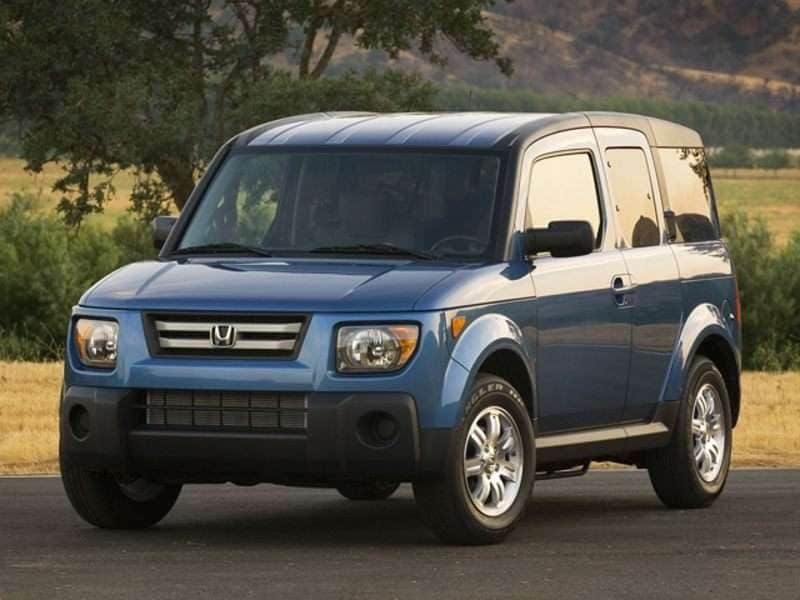
Photo by Honda
2010-2015 Hyundai Tucson
Hyundai’s second-generation Tucson brought a sense of style and sophistication to the automaker’s compact crossover suv. Engineered to exceed the requirements of Hyundai’s industry-leading 10-year/100,000-mile powertrain warranty, the Tucson is a reliable little sport-ute, but it is smaller inside than some competitors.
Available in GLS and Limited trims, each version of the Tucson has a robust 176-horsepower, 2.4-liter four-cylinder engine (170 hp in Partial Zero Emissions Vehicle tune). A six-speed manual gearbox kept the GLS version’s price low, but most have a six-speed automatic transmission. Original owners could upgrade from front-wheel to all-wheel drive. One of the more fun-to-drive small crossovers of its time, the second-generation Tucson is rather small inside for both people and cargo. Behind the back seat, it provides 25.7 cubic feet of cargo space. Maximum volume measures 55.8 cubic feet.
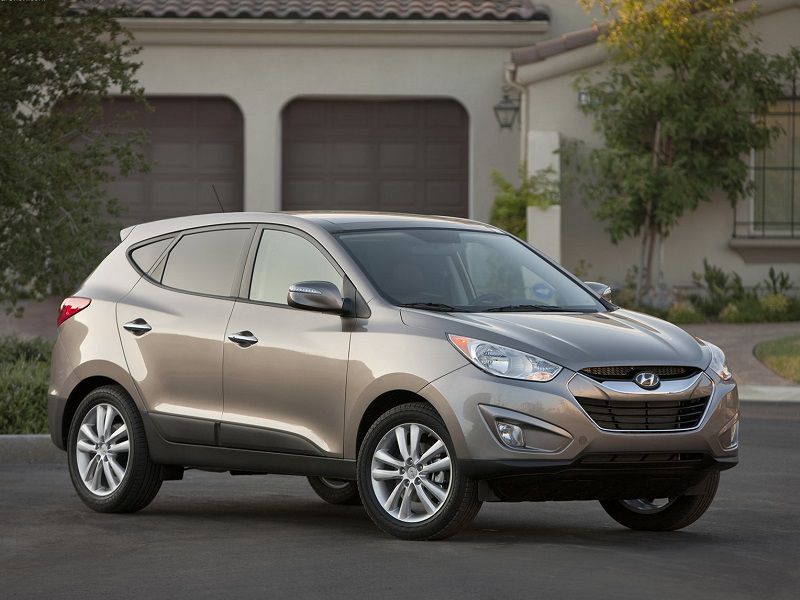
Photo by Hyundai
2009-2014 Nissan Murano
Equipped with styling that didn’t resonate with everyone, the second-generation Nissan Murano is a five-passenger mid-size crossover suv offering plenty of space for passengers and cargo.
Powered by Nissan’s excellent 265-horsepower, 3.5-liter V6 engine, but let down a bit by a continuously variable transmission (CVT), the Murano came with front-wheel or all-wheel drive. Based on the Nissan Altima sedan, the Murano possesses impressive on-pavement ride and handling qualities. Available trim levels include S, SL, and LE. Each one features quality materials and a genuine sense of interior style, along with a full slate of airbags and stability control. Behind the rear seat, the Murano offers 31.4 cubic feet of cargo space while maximum volume amounts to 64 cubic feet.
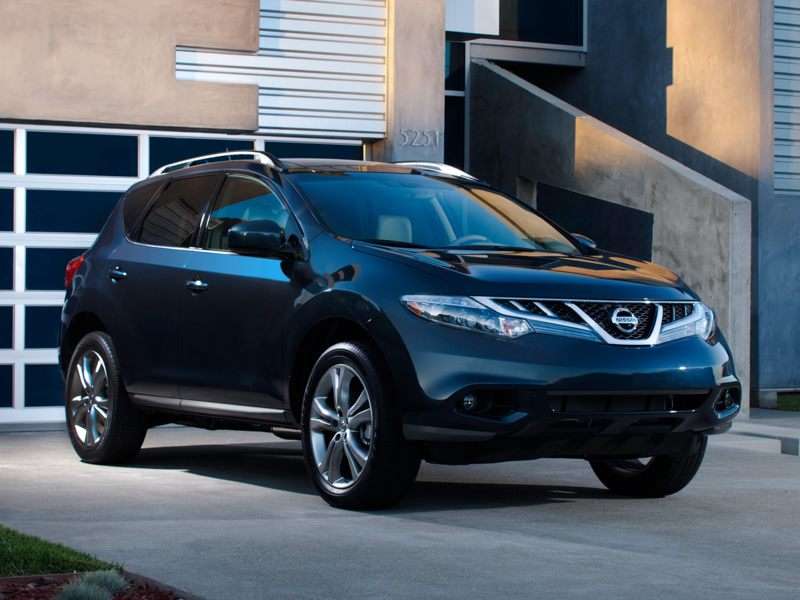
Photo by Nissan
2008-2013 Nissan Rogue
With the first-generation Rogue, Nissan found a successful compact crossover suv recipe. Featuring European flair and nimble driving dynamics, the Rogue was like a smaller and more affordable version of the bigger and more sophisticated Murano.
Based on the Sentra, the Rogue came with a 170-horsepower, 2.5-liter four-cylinder engine offering plenty of power for good performance, but the standard continuously variable transmission (CVT) ruined the driving experience to some degree. Though imperfect, the Rogue’s powertrain proved dependable over time. Nissan kept it simple with the first-generation Rogue, offering the SUV in S and SL trim levels. Cargo space wasn’t terribly competitive, though, measuring 28.9 cubic feet behind the back seat and 57.9 cubic feet with the rear seat folded down.
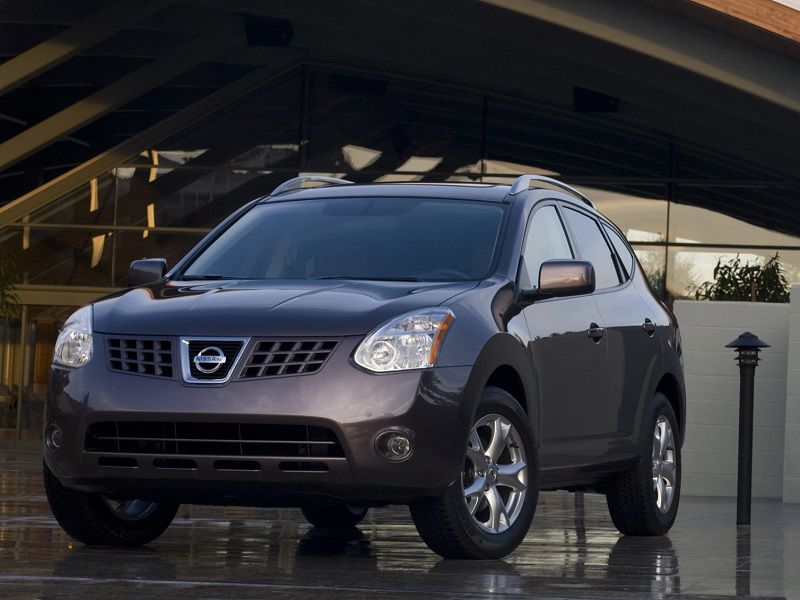
Photo by Nissan
2006-2007 Toyota Highlander
One of two seven-passenger SUVs on our list, and the only hybrid to make the cut, the final two model years of the original Toyota Highlander were the model’s best. This mid-size crossover SUV was based on the Camry platform, earned impressive crash-test ratings, and came in base, Hybrid, Sport, Limited, and Limited Hybrid trim levels.
Depending on which model you choose, the Highlander will have a 155-horsepower 2.4-liter four-cylinder engine, a 215-hp 3.3-liter V6, or a gas-electric hybrid drivetrain generating a combined 268 hp. The four-cylinder and V6 came with a conventional automatic transmission and front- or all-wheel drive. The Highlander Hybrid had a continuously variable transmission and front and rear electric motors creating a standard electronic AWD system. Cargo volume ranges from 10.5 cubic feet behind the third-row seat to a maximum volume of 80.6 cubic feet. With the third-row seat folded down but the second row in place, the Highlander swallows up to 39.7 cubic feet of cargo.
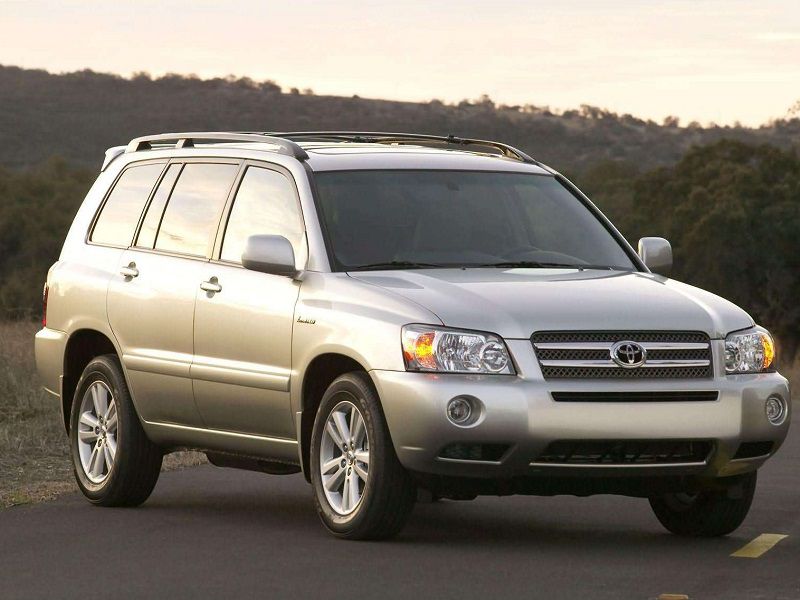
Photo by Toyota
2006-2012 Toyota RAV4
When Toyota redesigned the RAV4 for 2006, it grew substantially in size – enough to squeeze in an optional third-row seat behind second-row seats that slide to make extra room. Plus, in addition to a 166-horsepower, 2.4-liter four-cylinder engine, the third-generation RAV4 offered a 269-hp 3.5-liter V6 engine that put the "sport" into a sport-utility vehicle.
Trim levels included base, Sport, and Limited. They all had automatic transmissions, and all-wheel drive was an option. Thanks to the V6 engine option, the maximum tow rating amounted to 3,500 pounds. Cargo space is mighty generous, measuring 36.4 cubic feet behind the second-row seat and 73 cubic feet with it folded down.
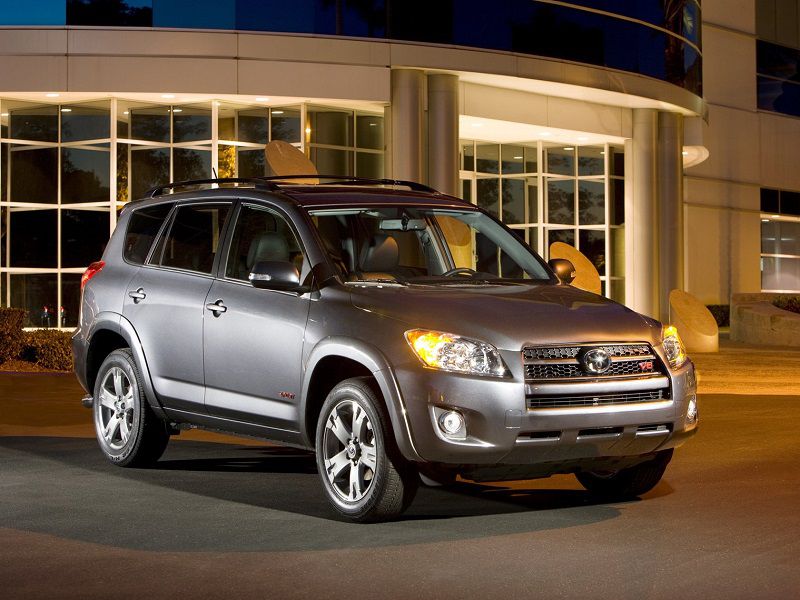
Photo by Toyota
2009-2015 Toyota Venza
Think of the Toyota Venza as a Camry station wagon, and you won’t be far off the mark. Based on the Camry, and featuring five-passenger seating, this mid-size crossover SUV features a huge interior, exception dependability, and an unusual sense of style for a Toyota.
The standard engine was a 182-horsepower 2.7-liter four-cylinder engine, with a 268-hp 3.5-liter V6 available as an upgrade. Both came with a six-speed automatic and front-wheel or all-wheel drive. Offered in a single level of specification with various option packages, the Venza offers plenty of stretch-out space inside its stylish cabin. Behind the back seat, the cargo area supplies 30.7 cubic feet of space. Fold the rear seat down for 70.1 cubic feet of cargo volume.
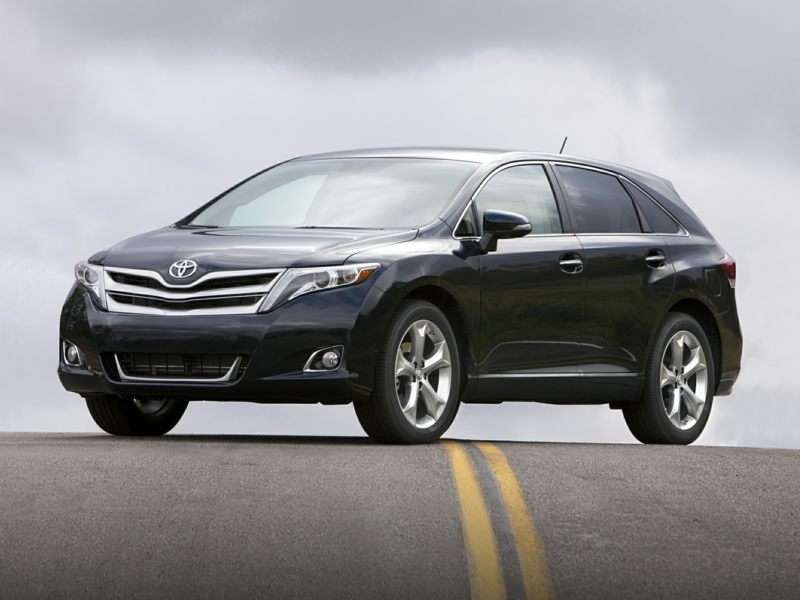
Photo by Toyota